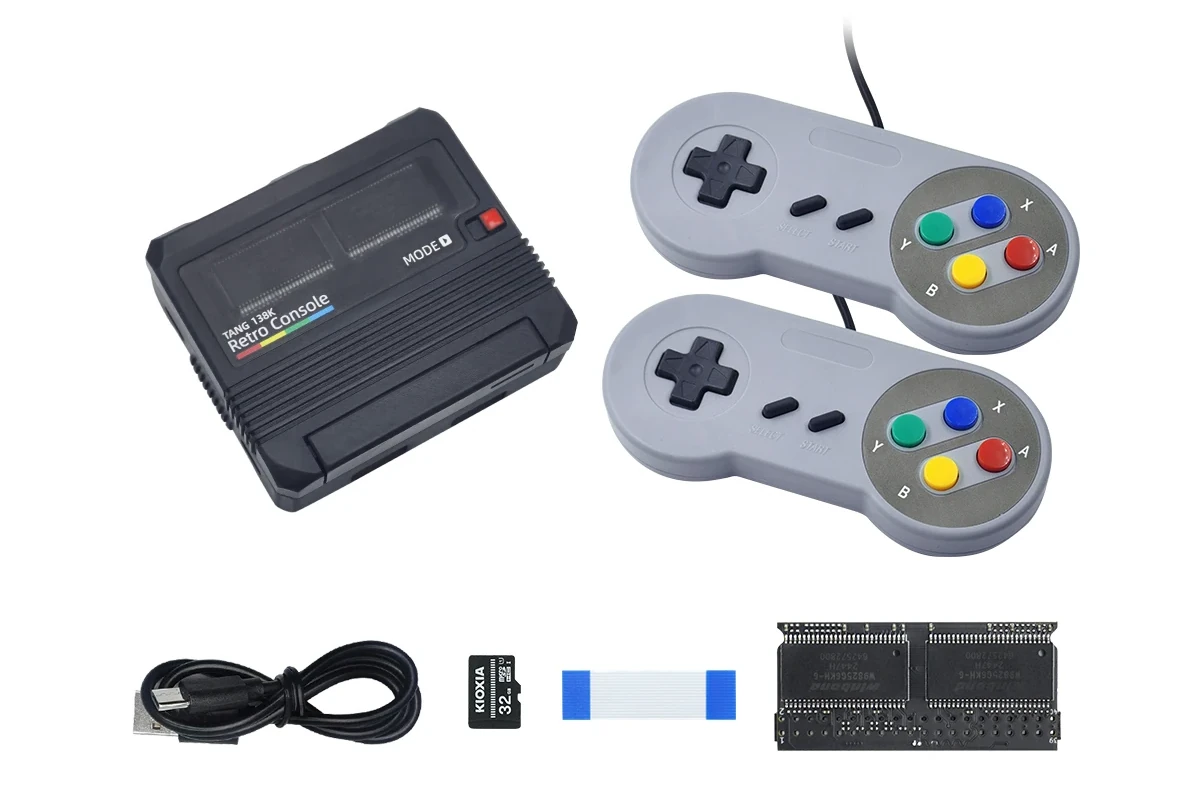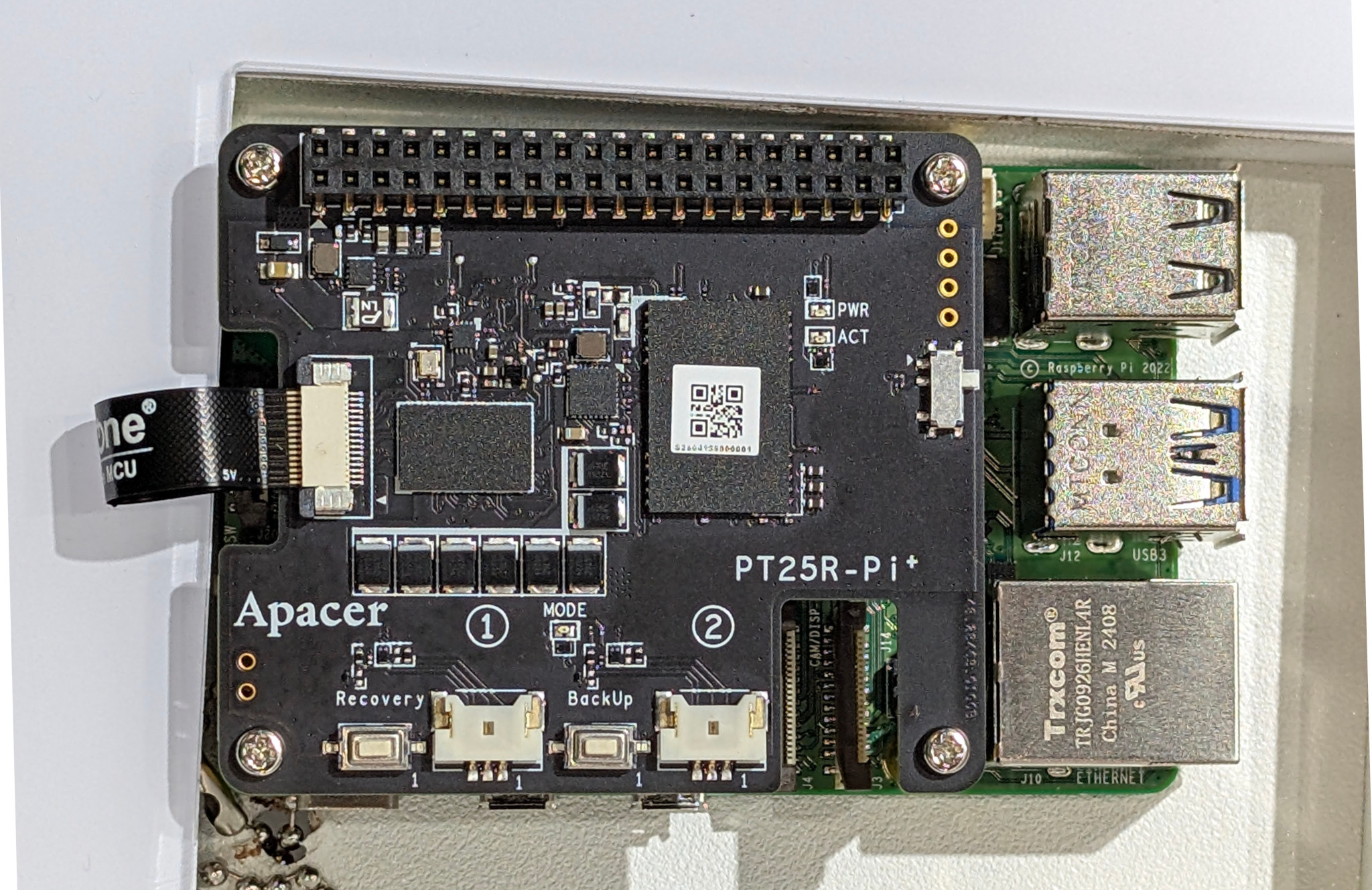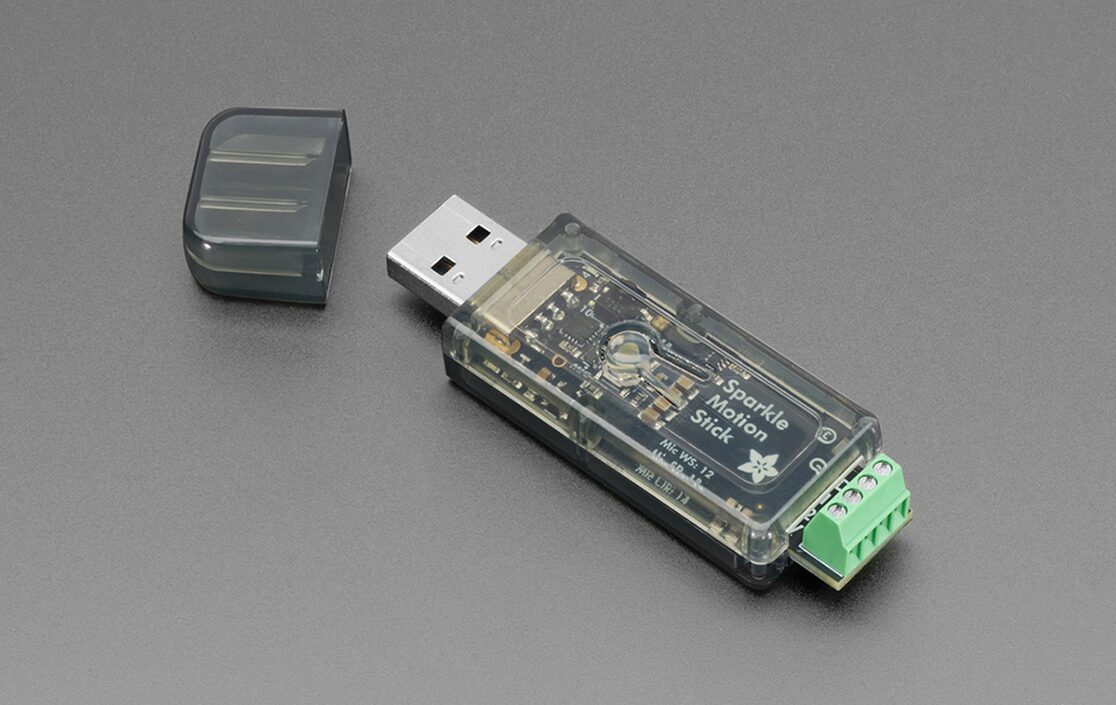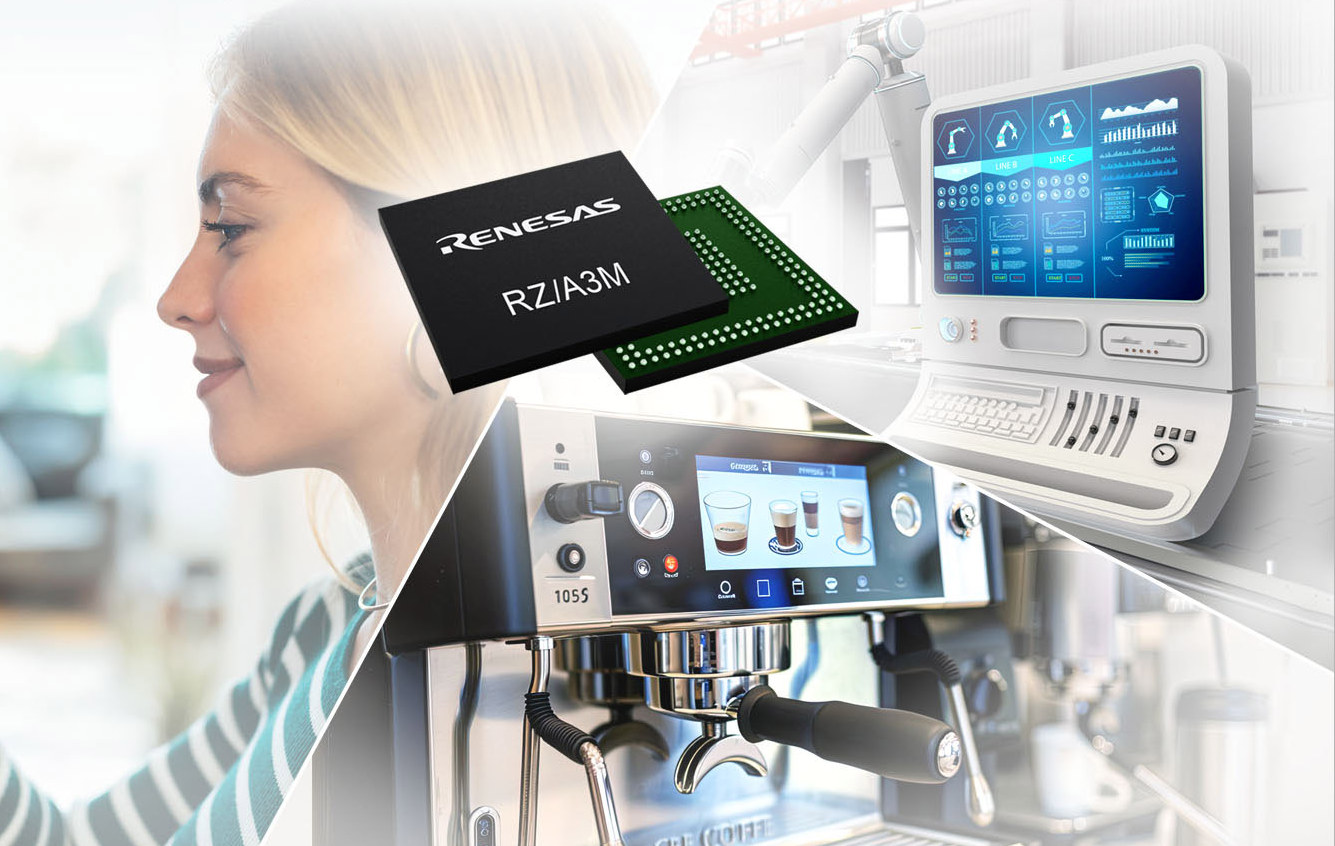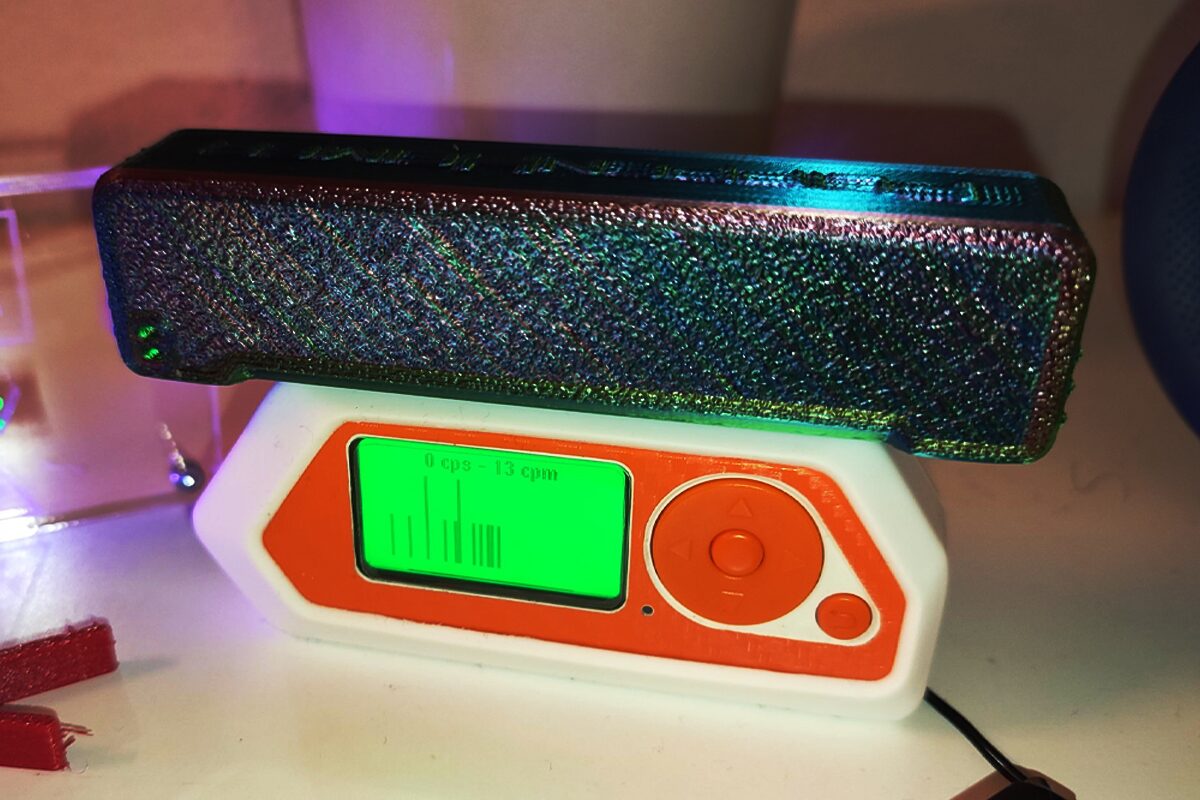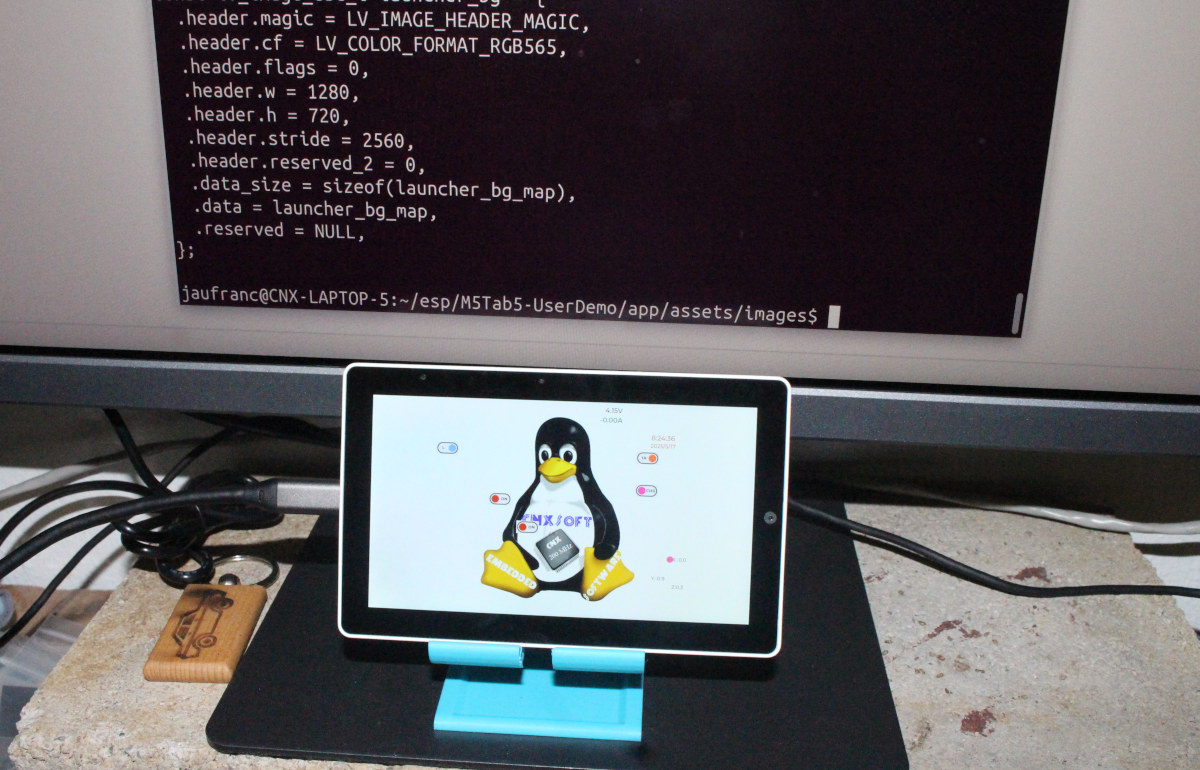Sipeed Tang Console is an FPGA development based on GOWIN GW5AST SoC FPGA with 138K LUTs and a hard RISC-V core or GW5AT FPGA with 60K LUTs, designed as a generic FPGA development and retro gaming platform. The Tange Console offers HDMI and RGB LCD display connectors, two USB ports for joystick or other peripherals, and plenty of expansion options with two 40-pin headers for SDRAM, GBA, and custom expansion, two PMOD connectors for joysticks or custom modules, and a 16-pin Raspberry Pi PCIe FFC connector. The “Tang Console” is also integrated into the “Tang Retro Console” as a complete gaming console kit with enclosure, joysticks, and accessories. Sipeed Tang Console specifications: SoM(one or the other) Sipeed Tang Mega 138K SoC FPGA – GOWIN GW5AST-LV138FPG484A with 138,240 LUT4 1,080 Kb Shadow SRAM (SSRAM) 6,120 Kb Block SRAM (BSRAM) Number of BSRAM – 340 298x DSP slices 12x PLLs 16x global […]
Apacer PT25R-Pi HAT SSD for Raspberry Pi 5 integrates 60GB to 480GB BGA SSD, supports CoreSnapshot 2 Backup and Recovery function
Apacer PT25R-Pi HAT SSD is an upcoming HAT for the Raspberry Pi 5 or compatible SBCs with a PCIe FFC connector that integrates a BGA SSD chip with 60 GB to 480GB capacity, and supports advanced features like CoreSnapshot 2 backup and recovery solution, write protect, instant keychange for improved security, and power loss protection. We’ve already seen many Raspberry Pi HATs for NVMe SSDs, but those are typically designed for M.2 SSD modules. The PT25R-Pi HAT SSD comes with built-in storage on the HAT, so it’s basically plug-and-play, and all the user has to do is install the HAT and connect the cable. Apacer PT25R-Pi / PT25R-Pi+ HAT SSD specifications (preliminary): Storage – Built-in 60GB to 480GB SSD chip Connection to Raspberry Pi 5 40-pin GPIO header 16-pin Raspberry Pi FFC connector limited to PCIe Gen2 x1 for optimized power usage Advanced features Optional support for CoreSnapshot 2 backup […]
Silicon Labs SiXG301 and SiXG302 “Series 3” wireless SoCs are built for line-powered and battery-powered IoT applications
Silicon Labs has just introduced the first 22nm Series 3 SoCs with the SiXG301 and SiXG302 Arm Cortex-M33 multiprotocol wireless SoCs designed for line-powered and battery-powered IoT devices, respectively. The SiXG301 is offered with 4MB flash and 512 KB SRAM, embeds an LED pre-driver for advanced LED smart lighting and smart home products, and supports 2.4 GHz wireless protocols such as Bluetooth, Zigbee, and Thread with support for Matter. The upcoming SiXG302 Bluetooth and Matter SoC offers an ultra-low-power consumption using only 15 µA/MHz active current, or 30% lower than competitive devices in its class, and as such is ideal for battery-powered wireless sensors and actuators. We’ll be focusing on the SiMG301 multi-protocol SoC and SiBG301 Bluetooth LE SoC in this article since the details are sparse for the SiXG302 parts (SiMG302 and SiBG302). Silicon Labs SiMG301 / SiBG301 specifications: MCU Core – 32-bit Arm Cortex-M33 with DSP instructions and […]
Adafruit Sparkle Motion Stick – A compact ESP32-S3 USB WLED controller board with dual 5V LED outputs, an I2S Mic, and a snap-fit enclosure
Adafruit has recently released the Adafruit Sparkle Motion Stick, a compact, WLED-friendly Neopixel USB controller board built around an ESP32-S3 Module designed for audio-reactive LED projects, cosplay props, holiday lighting, and more. The module comes with a USB Type-A port for programming and power input (5V, 2A max), and a simple enclosure for protection (not weatherproof). It includes a built-in I2S microphone for audio-reactive effects, an IR receiver for remote control. Other than that it has a user-programmable button, an onboard NeoPixel LED, and a red status LED with two 5V-level shifted signal outputs with power and to connect the LEDs a screw terminal blocks. Adafruit Sparkle Motion Stick specifications SoC – ESP32-S3 dual-core Xtensa LX7 MCU @ 240MHz with 2.4GHz Wi-Fi and BLE 5 LED Control – 2x level-shifted output channels (5V logic) with terminal blocks (26–20AWG support) Audio Input – Built-in I2S MEMS digital microphone for audio-reactive lighting Infrared […]
1GHz Renesas RZ/A3M Cortex-A55 MPU embeds 128MB on-chip DDR3L for HMI applications
Renesas RZ/A3M is an Arm Cortex-A55 microprocessor (MPU) clocked at up to 1.0 GHz with 128MB on-chip DDR3L for cost-effective, yet advanced HMI applications with up to 1280×800 resolution. The RZ/A3M is similar to its predecessor, the Renesas RZ-A3UL, but it integrates 128MB on-chip RAM in a single System-in-Package (SiP), supports both MIPI DSI and parallel display interfaces, and adds a 2D graphics accelerator for smoother user interfaces. Renesas RZ/A3M specifications: CPU – Single-core Arm Cortex-A55 @ up to 1.0 GHz GPU – 2D drawing engine Memory 128KB on-chip SRAM with ECC Built-in 128MB DDR3L-1600 SDRAM (16-bit bus width) Storage SPI Multi I/O Bus Controller× 1 channel (4-bit Double data rate) Boot from Serial NAND or Serial NOR flash SD card host interface Display I/F – 4-lane MIPI DSI or Digital parallel output up to 1280×800 resolution @ 60 Hz Audio – Serial sound interface (SSI/I2S) USB – 1x USB […]
FlippenHeimer Geiger Counter module adds radiation sensing to Flipper Zero
The FlippenHeimer is a compact Geiger counter add-on module designed to work with the Flipper Zero. It allows users to monitor beta and gamma radiation levels using the Flipper’s display and power source, making it a portable device to detect radiation. Built around a J305 Geiger–Müller tube, the FlippenHeimer provides real-time data logging, visual feedback via graphs. Other than that, it features “atomic dice roller” functionality that uses the random nature of radioactive decay to generate unpredictable outcomes. Key components of this device include 555 timers, LM358 op-amps, 2N3904 and MPSA42 transistors, inductors, and high-voltage capacitors. These features make this device useful for applications such as environmental awareness, hobbyist radiation monitoring, and generating random values. FlippenHeimer Specifications: Main interface – Connects to Flipper Zero via GPIO/UART (plug-and-play with GPIO header) Detection device – J305 Geiger-Müller glass tube, suitable for gamma and beta radiation Radiation detection: Detects beta and gamma radiation […]
M5Stack Tab5 Review – Part 2: Getting started with ESP32-P4 firmware development using the ESP-IDF Framework and Arduino IDE
In the first part of the review, we checked out the hardware of the M5Stack Tab5 ESP32-P4 IoT development kit and tried the demo firmware, whose user interface allows the user to quickly experiment with the camera, microphone, speaker, WiFi, power consumption, GPIOs, RS485, and more. Since there’s no user application for the Tab5 at this stage, I decided to look into software development resources for the ESP32-P4 devkit in the second part of the review. I’ll first follow the instructions to build the demo firmware from source using the ESP-IDF framework, then analyze key aspects of the source and make some small modifications. After that, I’ll have a look at ESP32-P4 Arduino support via M5Unified and M5GFX library. ESP-IDF 5.4.1 installation and ESP32-P4 Hello World program The first step is to get the ESP-IDF 5.4.1 and configure ESP32-P4 following the instructions on the Espressif website, before testing it with […]
PitFusion thermal imager for Raspberry Pi combines Melexis MLX90640 sensor and RGB camera (Crowdfunding)
IVMECH Mechatronics’ PitFusion is a thermal imager designed for the Raspberry Pi based on a Melexis MLX90640 32×24 thermal sensor and an Adafruit 0V5647 RGB sensor comparable to the Raspberry Pi Camera Module v1.3. The kit enables users to capture thermal and visible images simultaneously, and can be useful for automation, robotics, security (human/pet motion detection), non-contact temperature measurement, and environmental monitoring applications. PiFusion specifications: Thermal Sensor – Adafruit LX90640 with 32 x 24 pixel array Camera Sensor – Adafruit 0V5647 comparable to the RPi Camera Module v1.3 with 2592 x 1944 resolution Temperature Range – -40°C to 300°C Frame Rate – Up to 32 Hz (thermal), 30 fps (camera) Spectral Range – 8 µm to 14 µm (optimal for human body and object detection) Host Interfaces – I2C for thermal sensor, CSI for camera) Dimensions – 40 x 30 x 10 mm Weight – 15 grams IVMECH says the […]


